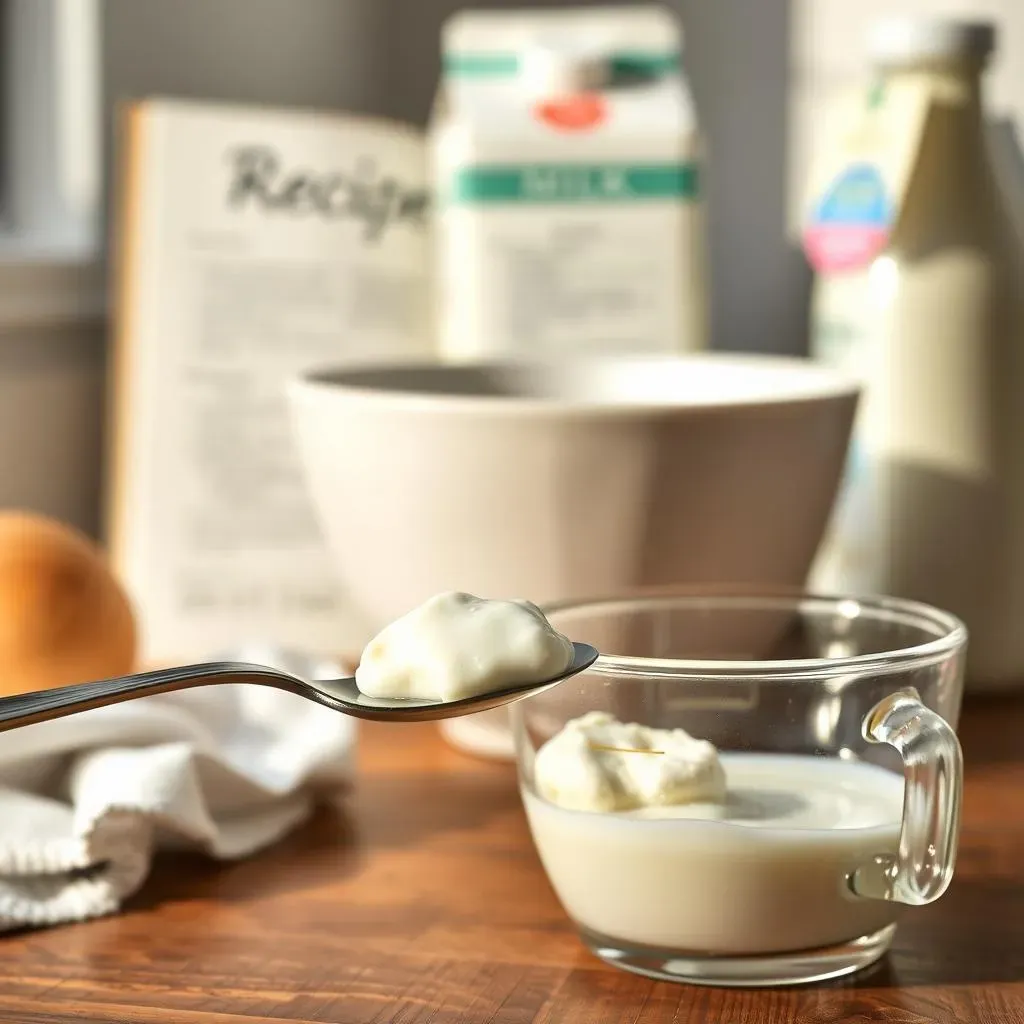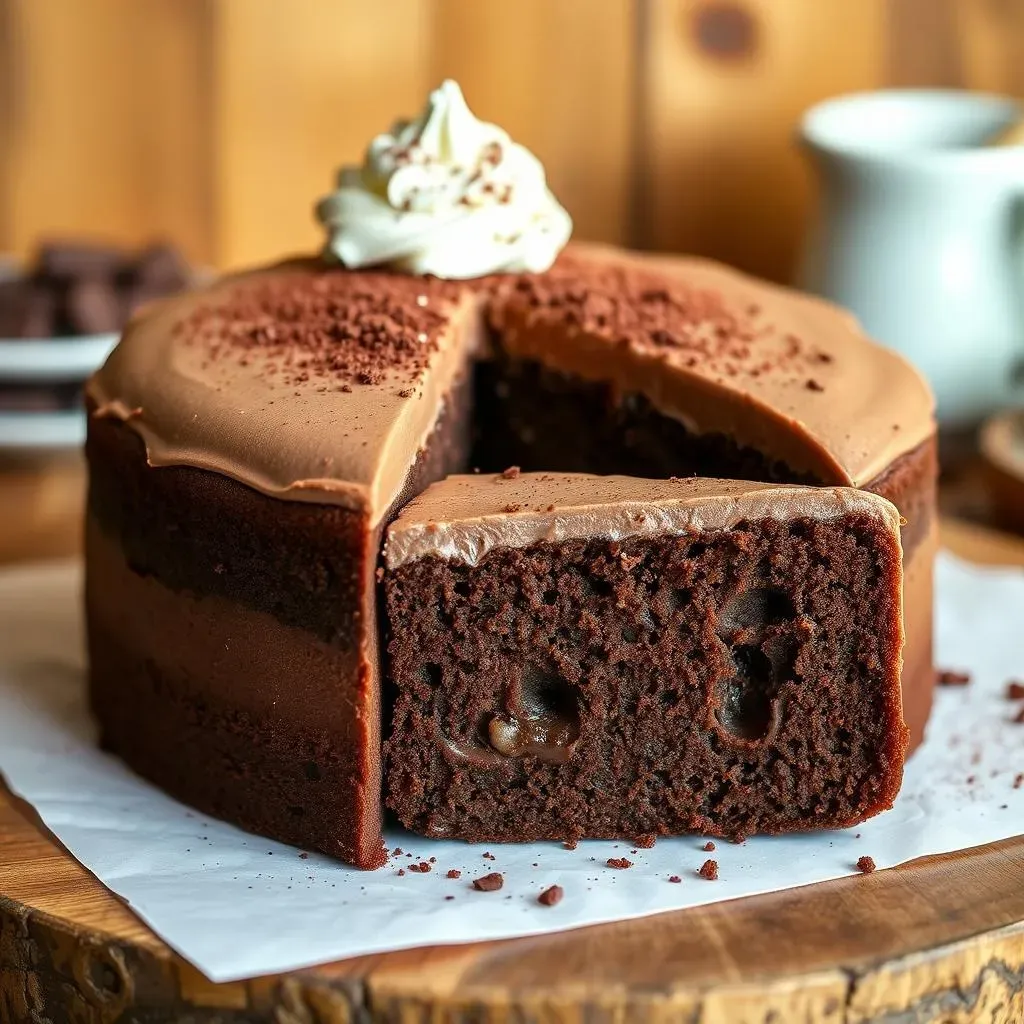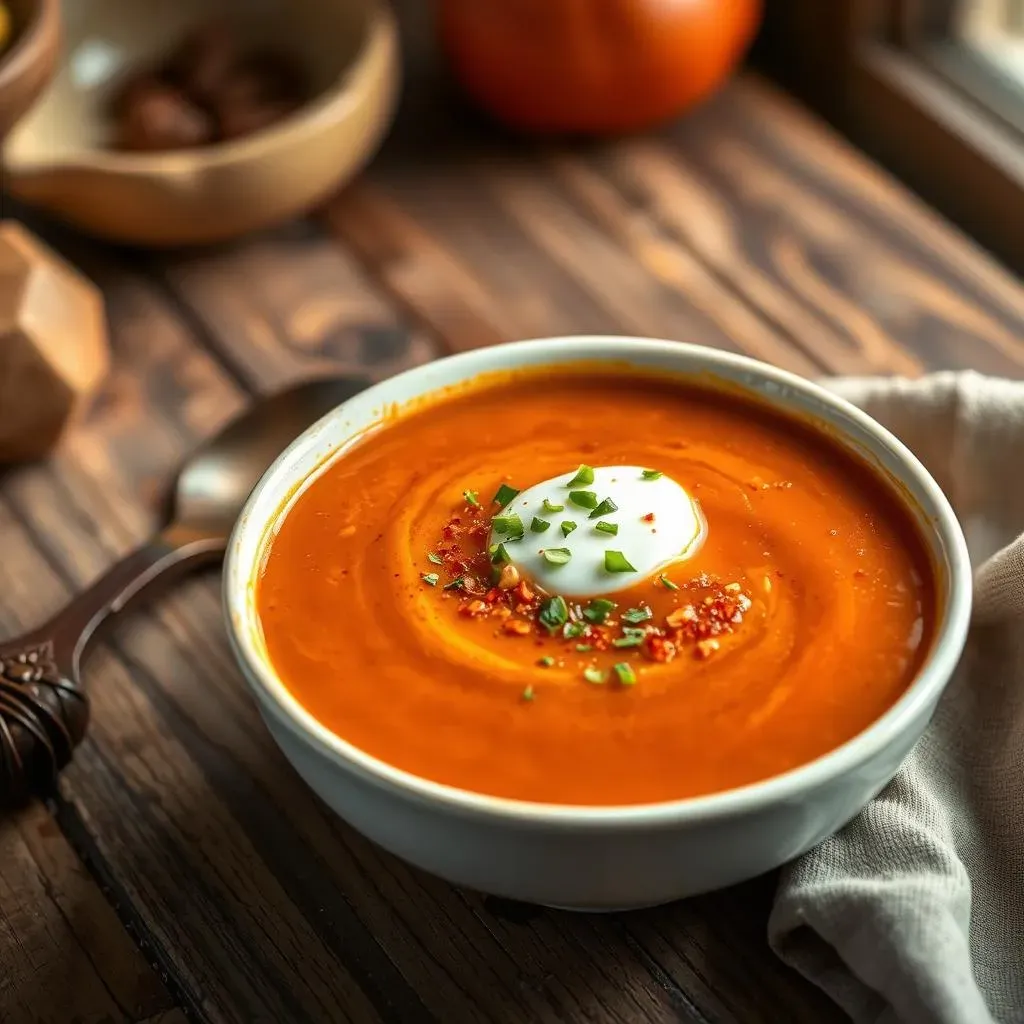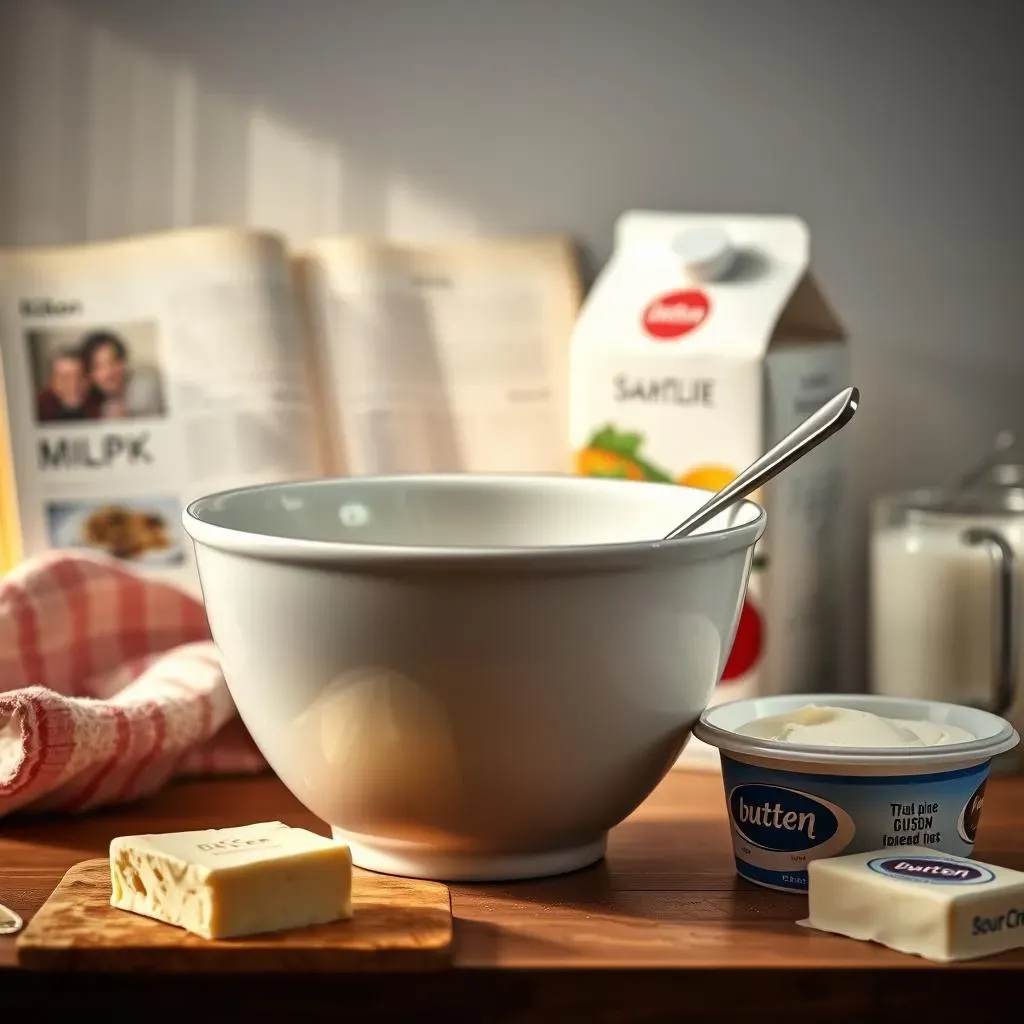Table of Contents
Ever stared into your almost-empty fridge, recipe in hand, and realized you're out of milk? Don't despair! This article tackles the burning question: can you substitute sour cream for milk in a recipe? We'll explore the surprising versatility of sour cream as a milk replacement, examining both the sweet and savory sides of cooking. We'll delve into when this swap works like a charm (and when it might lead to a culinary catastrophe). You'll learn practical tips and tricks for making successful substitutions, including essential adjustments to your recipes to ensure they turn out perfectly. We'll cover everything from baking cakes and quick breads to creating creamy soups and sauces. Whether you're a seasoned chef or a baking novice, this guide will equip you with the knowledge to confidently answer the question "can you substitute sour cream for milk in a recipe?" and achieve delicious results every time. Get ready to unlock a new level of kitchen creativity!
Can You Substitute Sour Cream for Milk? A Simple Answer

Can You Substitute Sour Cream for Milk? A Simple Answer
The Short Answer: Sometimes!
The quick answer is a qualified "yes." Sour cream can often replace milk in recipes, but it's not a one-size-fits-all swap. Think of it like this: milk is a thin, watery liquid, while sour cream is thick and tangy. The success of your substitution hinges on understanding these differences and how they affect the final product. You wouldn't use sour cream to make a glass of milk, right? Similarly, certain recipes are more forgiving than others.
The type of recipe plays a crucial role. In some baked goods, the sour cream's added richness and acidity can even enhance the flavor! However, in recipes where the liquid consistency of milk is essential, sour cream might lead to a dense or clumpy result. It's all about finding the right balance.
Recipe Type | Sour Cream Substitution? | Considerations |
|---|---|---|
Cakes/Muffins | Often works well | May need to reduce other fats |
Sauces/Soups | Sometimes, but check consistency | May need thinning with water or broth |
Mashed Potatoes | Generally not recommended | Sour cream adds flavor, but not liquid |
Factors Affecting the Substitution
Several factors determine whether sour cream is a viable milk substitute in your particular recipe. First, consider the quantity of milk called for. Small amounts are easier to replace than large ones. The recipe's overall composition matters too. If the recipe relies heavily on the liquid properties of milk, like in a thin crepe batter, you might run into trouble. Finally, the type of sour cream — full-fat, reduced-fat, or even light — can subtly change the outcome. Full-fat sour cream will add the most richness and density.
It's always a good idea to start with a small test batch or do a little online research for your specific recipe. Many baking blogs and websites offer advice on successful substitutions and helpful adjustments. Don't be afraid to experiment, but always have a backup plan in case your culinary adventure takes an unexpected turn!
- Amount of milk in the recipe
- Recipe's overall liquid content
- Type of sour cream used
- Recipe's sensitivity to changes in texture and flavor
When Sour Cream Works as a Milk Substitute in Baking

When Sour Cream Works as a Milk Substitute in Baking
Cakes and Muffins: A Creamy Dream
Sour cream is a fantastic addition to cakes and muffins! Its richness adds incredible moisture, resulting in a tender crumb that's far superior to what you'd get with milk alone. The slight tanginess it introduces also complements many flavors, especially those with a hint of sweetness or citrus. Think lemon poppy seed muffins or a decadent chocolate cake – the sour cream elevates them to the next level. It's not just about moisture; sour cream also contributes to a delightful, almost velvety texture.
But remember, sour cream is a fat, so you might need to adjust the amount of butter or oil in your recipe. A good rule of thumb is to reduce the other fats by about half the amount of sour cream you're adding. Always start with a small test batch to perfect your technique.
Cake Type | Sour Cream Benefit | Adjustment Needed |
|---|---|---|
Chocolate Cake | Enhanced richness and moisture | Reduce butter by 1/4 cup per cup of sour cream |
Lemon Poppy Seed Muffin | Balanced sweetness and tang | Reduce oil by 1/2 the amount of sour cream used |
Carrot Cake | Adds moisture and creaminess | Reduce oil by 1/3 cup per cup of sour cream |
Quick Breads: A Tangy Twist
Quick breads, like banana bread or cornbread, also benefit from the addition of sour cream. The fat content adds moisture and helps create a tender crumb, while the acidity enhances the overall flavor profile. However, be mindful of the liquid content already present in your recipe. If you're substituting a substantial amount of milk, you might need to reduce the other wet ingredients slightly to avoid a batter that's too thin.
In recipes calling for buttermilk, sour cream is a particularly good substitute. Both offer similar levels of acidity and richness, resulting in a deliciously moist and flavorful end product. If your recipe calls for buttermilk, feel free to substitute with an equal amount of sour cream.
- Banana Bread: Sour cream adds richness and moisture.
- Cornbread: The tanginess complements the sweetness.
- Blueberry Muffins: Sour cream enhances the fruit's flavor.
Cookies and Brownies: Proceed with Caution
While sour cream can work wonders in cakes and quick breads, it's best to tread carefully when it comes to cookies and brownies. These recipes often rely on a precise balance of ingredients to achieve the desired texture and spread. The high fat content of sour cream can significantly alter the consistency of your cookies or brownies, potentially resulting in a denser or chewier product than intended. Unless a recipe specifically calls for sour cream, it's generally advisable to stick to the original ingredients.
If you're feeling adventurous, start by substituting a small amount of milk with sour cream – perhaps 1/4 cup for every cup of milk – and see how it affects the outcome. Remember, a little experimentation can go a long way, but always keep a backup plan in mind!
Using Sour Cream Instead of Milk in Savory Dishes: Considerations

Using Sour Cream Instead of Milk in Savory Dishes: Considerations
Soups and Stews: A Creamy Twist
Sour cream can add a delightful creaminess to soups and stews, lending a rich texture and a subtle tang. However, remember that sour cream is thicker than milk, so you may need to thin it out with a little broth or water to achieve the desired consistency. Start by substituting a small amount of the milk with sour cream – about 1/4 cup for every cup of milk – and adjust as needed. Experimentation is key! Don't be afraid to taste and adjust as you go.
The flavor profile of your soup or stew will also influence your decision. For example, sour cream pairs beautifully with creamy tomato soup or potato soup, enhancing their richness. However, in lighter broths or vegetable-based soups, the sour cream's tanginess may be overpowering. Consider the existing flavors in your recipe to determine if the sour cream addition will complement them or clash.
Soup Type | Sour Cream Substitution? | Considerations |
|---|---|---|
Creamy Tomato Soup | Excellent substitute | May need minimal thinning |
Chicken Noodle Soup | Use sparingly | Could overpower delicate flavors |
Vegetable Soup | Proceed with caution | Consider the existing flavors |
Sauces and Dips: A Rich and Tangy Addition
In sauces and dips, sour cream serves as a wonderful thickener and flavor enhancer. Its rich texture and tangy notes can elevate simple sauces to new heights. However, it's crucial to be mindful of the heat sensitivity of sour cream. Adding it directly to a hot sauce can cause it to curdle, resulting in an undesirable texture. It's best to incorporate sour cream toward the end of the cooking process, once the sauce has cooled slightly.
For example, a simple sour cream-based dip can be easily enhanced by adding herbs, spices, or other flavorings. In creamy pasta sauces, a dollop of sour cream can add a luxurious texture and a subtle tanginess that complements the pasta and cheese. But remember, start with a small amount, and gradually add more until you reach your desired consistency and flavor profile. Always taste and adjust as you go!
- Pasta Sauce: Adds creaminess and subtle tang.
- Taco Dip: Enhances the flavor and texture.
- Potato Salad: Contributes richness and creaminess.
Can you substitute sour cream for milk? Recipe Adjustments and Alternatives

Can you substitute sour cream for milk? Recipe Adjustments and Alternatives
Making the Swap: Recipe Adjustments
So, you're ready to swap sour cream for milk? Great! But remember, sour cream is thicker and tangier than milk. You'll likely need to make some adjustments to your recipe to compensate for these differences. For starters, consider the liquid content. Since sour cream is thicker, you might need to add a bit of extra liquid—like water or broth—to thin it out and maintain the desired consistency. Think of it as a balancing act; you're replacing a thin liquid with a thicker one, so you need to adjust the overall liquid balance in your recipe to keep everything flowing smoothly.
Another crucial factor is the recipe's fat content. Sour cream is higher in fat than milk. This means you might want to reduce the amount of butter, oil, or other fats called for in the recipe. Otherwise, your final product might be overly rich or greasy. This is especially important in baked goods where the ratio of fat to liquid dramatically affects the texture. A good rule of thumb is to reduce the fat by about half the amount of sour cream you add. But, as always, taste and adjust as you go. Baking, like life, is all about experimenting and learning!
Recipe Element | Adjustment When Using Sour Cream |
|---|---|
Liquid Content | May need to add water or broth to thin |
Fat Content | Reduce other fats by approximately half the amount of sour cream used |
Acidity | Consider reducing other acidic ingredients |
Exploring Alternatives: When Sour Cream Isn't the Answer
Sometimes, sour cream just isn't the right substitute for milk, especially in recipes where the liquid consistency is crucial. For example, in thin batters like those used for pancakes or crepes, sour cream's thickness would ruin the texture. In these cases, exploring other alternatives is a smarter move. Yogurt, for instance, offers a similar creamy texture to sour cream but with a thinner consistency, making it a better option for liquid-heavy recipes. You could also consider using buttermilk, which has a similar tang to sour cream, or even a combination of milk and cream for a richer texture.
The best alternative depends entirely on the specific recipe and desired outcome. If you're unsure, a quick online search for alternatives to milk in your specific recipe can provide helpful insights. Remember, baking and cooking are creative processes. Don't be afraid to experiment and find what works best for you. Your culinary journey is all about discovering what delights your taste buds—and sometimes, that means stepping outside the recipe box.
- Yogurt: Thinner consistency, good for liquid-heavy recipes
- Buttermilk: Similar tang to sour cream
- Milk and Cream: Richer texture than milk alone
- Water (for thinning): Use sparingly to prevent altering the flavor